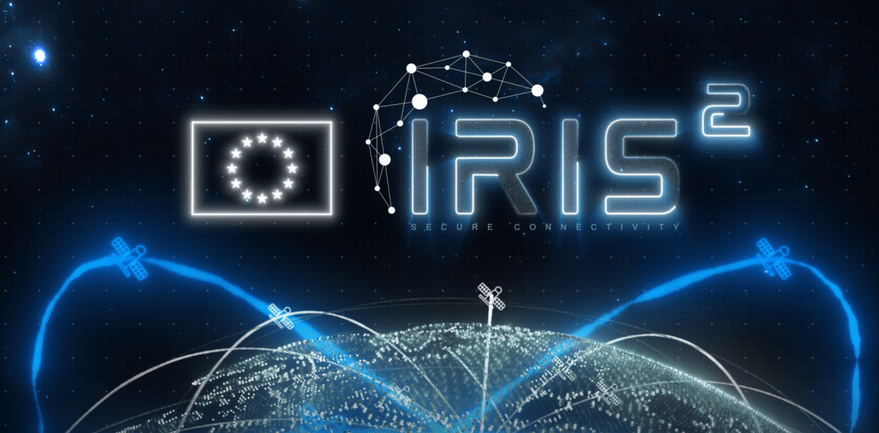Italy is at a crucial juncture in its space policy, weighing the options of developing its own satellite constellation or depending on SpaceX’s Starlink services while awaiting the European Union’s IRIS2 program. A recent report from Italy’s Interministerial Committee for Space and Aerospace Policy (COMINT) raises concerns about the country’s representation in IRIS2, which is designed to establish a public-private communication constellation in low and medium Earth orbit.
The document, obtained by SpaceNews and initially reported by the Italian newspaper Il Fatto Quotidiano, underscores Italy’s urgent need to decide on its future telecommunications strategy. It highlights the offer from SpaceX to provide Starlink services, prompting discussions on whether Italy should continue its pursuit of a national low-Earth orbit dual-use constellation, currently named “MERCURIO,” or deepen its reliance on Starlink.
As of now, the COMINT report does not indicate a definitive commitment to Starlink. In January 2025, Bloomberg disclosed that Italy was in negotiations with SpaceX for potential Starlink services worth up to $1.6 billion, although the Italian government has denied any contracts were finalized. Ongoing discussions with SpaceX continue, as the nation grapples with its satellite capabilities.
Assessing Italy’s Satellite Strategy
In March 2024, the COMINT and the Italian Space Agency (ASI) initiated a study to evaluate the feasibility of the MERCURIO project. As the project has advanced from Phase 1 to Phase 2, details regarding the number of satellites and budget remain undisclosed. Despite the lack of publicly available results from Phase 1, the leaked document acknowledges the “clear superiority” of SpaceX’s Starlink over IRIS2, which has yet to be operational. Furthermore, it notes that “Italian industry appears to be underrepresented compared to its potential within IRIS2,” emphasizing the necessity for a better balance between national aspirations and European industrial involvement.
The primary contractors for the IRIS2 consortium include companies from Luxembourg, France, Germany, and Spain. Notably, two firms with partial Italian ownership—Telespazio and Thales Alenia Space—are directly involved, but representatives from both companies have declined to comment on the current situation.
In a recent LinkedIn post, Thales Alenia Space reiterated its support for IRIS2, claiming the project will be pivotal for European telecommunications. The company stated, “IRIS 2 will be the ultimate in the field of telecommunications constellations,” emphasizing its commitment to utilizing cutting-edge technologies to enhance the project, which is essential for Europe’s strategic sovereignty.
A source close to COMINT, speaking on condition of anonymity, clarified that the acknowledgment of SpaceX’s operational maturity compared to IRIS2 is a factual observation rather than a political endorsement or procurement decision. The source elaborated that Italy is focused on pursuing both EU and U.S. strategies, aiming to maintain political independence while ensuring a robust long-term partnership with the United States.
Future Directions and Strategic Balance
The source emphasized Italy’s clear position: “The government’s line is clear: pro-European and transatlantic.” Italy remains committed to EU initiatives like GOVSATCOM and IRIS2, contributing significantly in terms of industrial, operational, and security aspects. They reiterated that any potential interim solution, pending the full operational capacity of the European IRIS2 constellation, will be assessed on a case-by-case basis. This indicates that Italy does not see Starlink as a replacement for IRIS2 but rather a temporary supplementary solution until the European system is fully operational.
As studies on MERCURIO continue, a decision regarding Italy’s telecommunications strategy is anticipated later this year. The leaked report concludes with a broader reflection on the strategic dynamics between Europe and the United States, stating that “the EU will inevitably rely on a very close relationship with the U.S. in strategic sectors such as satellite telecommunications.”
This reality illustrates a fundamental tension within Italian space policy: the challenge of balancing aspirations for sovereignty and innovation with the dependency on U.S. technology and partnerships. Some experts, like Ludwig Möller, director of the European Space Policy Institute (ESPI), caution against hastily drawing conclusions. He noted that, at present, there are no alternatives comparable to Starlink.
Möller stated, “If a country faces an urgent situation, if there is a real case where you depend on that capability, then the country turns to what is available. That is completely normal.” He added that while Starlink shines brightly today, the satellite landscape is evolving, much like the early days of the internet.
Italy’s decision will not only shape its telecommunications future but also reflect its strategic positioning within the broader European and global contexts. As the deadline approaches, stakeholders in the Italian space sector are keenly watching the developments that will define the nation’s path forward.





































































